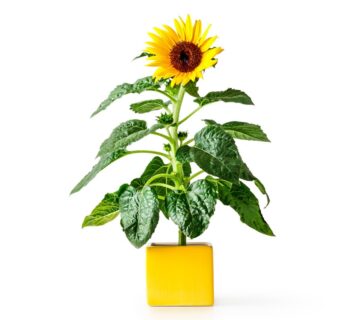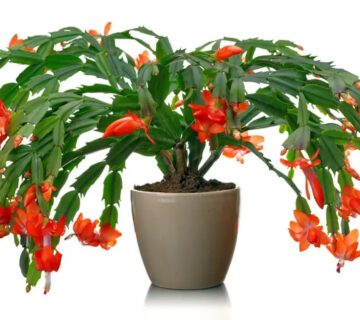Gerbera Daisy
Gerbera daisies, with their vibrant and captivating blooms, are beloved for their cheerful presence in gardens and floral arrangements. This comprehensive guide delves into the enchanting world of Gerbera daisy plants, providing you with all the essential information you need to cultivate and care for these stunning flowers.
Growing Conditions:
Learn about the optimal growing conditions for Gerbera daisies, including sunlight requirements, temperature preferences, and soil considerations. Gain insights into the ideal planting techniques and spacing recommendations to ensure healthy growth and abundant blooms.
Watering and Fertilization:
Explore the best practices for watering Gerbera daisies, striking the right balance to avoid overwatering or underwatering. Uncover the importance of proper fertilization and the types of nutrients necessary to promote vigorous growth and vibrant flowers.
Pruning and Deadheading:
Master the art of pruning Gerbera daisies to maintain their shape and encourage continuous blooming. Understand the importance of deadheading spent flowers and how it enhances the overall appearance and longevity of the plant.
Common Pests and Diseases:
Identify and combat common pests and diseases that may afflict Gerbera daisies, such as aphids, spider mites, powdery mildew, and leaf spot. Discover preventive measures and organic treatments to keep your plants healthy and thriving.
Propagation Techniques:
Unlock the secrets of propagating Gerbera daisies through division, seed sowing, or tissue culture. Learn step-by-step methods to expand your collection or share the joy of these vibrant blooms with others.
Container Gardening:
Explore the world of container gardening with Gerbera daisies, enabling you to enjoy their beauty even in limited spaces. Discover the best container types, potting mixes, and care tips for creating stunning displays for patios, balconies, or indoor environments.
Landscaping Ideas:
Inspire your creative side with landscaping ideas that incorporate Gerbera daisies. From colourful borders and edgings to mixed flowerbeds and container combinations, explore various design concepts to enhance the visual impact of your outdoor spaces.
Seasonal Care:
Navigate the seasonal care requirements for Gerbera daisies, understanding how to protect them during winter or extreme weather conditions. Uncover tips for extended bloom periods and preparing plants for the growing season.
With this comprehensive guide to Gerbera daisy plants, you will embark on a journey of cultivating these delightful blooms with confidence and expertise. Discover the joy of tending to these radiant flowers and witness their splendor unfold in your garden or floral arrangements.
Things to know about Gerbera Daisy
Common (vernacular) Name
एन्थूरियम (Hindi), Anthurium, Flamingo Lily, Flamingo Flower, Painter's Palette, Lace Leaf, Pigtail Plants, Tail Flower and many more.
Botanical Name
Anthurium Andraeanum
Origin
Mexico to Tropical America (Colombia, Ecuador).
Family
Araceae
Plant Type
Tropical plant
Plant Features
Ornamental / Evergreen / Exotic
Life Cycle
Perennial
Landscape Uses
Container Planting and Houseplants.
Species
Belolonchium, Calomystrium, Cardiolonchium, Chamaerepium, Cordatopunctatum, Dactylophyllium, Decurrentia, Digitinervium, Gymnopodium, Leptanthurium, Pachyneurium, Polyphyllium, Polyneurium, Porphyrochitonium, Schizoplacium, Semaeophyllium, Tetraspermium, Urospadix, Xialophyllium.
Varieties
It comes with thousand of different varieties in a diversity of leaf and flower colorations.
Size
Height : 1 to 1.5 feet tall and Width : 1 feet wide when mature.
Indoors or Outdoors
Outdoors : Anthurium can be used outdoors in shady plantings, avoid direct sun light.
Indoors : Excellent plant grow in bright light or indirect light. Best indoor plants for beginners.
Blooming / Flowering
Blooming period is throughout the year.
Flower Colour
It’s come with a contrasting spadix Gold, Yellow, Orange, Pink, White, Green, Purple, Red, Burgundy, Multicolored and Variegated colours.
Lucky Plant
According to Feng Shui, It bring Good Luck in your relationships.
Lighting / Sun Exposure
Bright Indirect Sunlight.
Temperature
Grow best preferably warm temperature above 21°C and can be tolerate max temp. as high as 32°C.
Growth Rate
Anthurium is a slow to moderate growers plant.
Watering
Moderate watering, Mist or over head sprinkler to provide water and to improve relative humidity. Not tolerate overwatering it may cause root damage and yellowing of the leaves.
Fertilizer
Slow-release fertilizer, or a water-soluble liquid fertilizer once or twice in the growing season (Spring through Summer).
i.e. - Cow dung, DAP, Compost, NPK 30-10-10 fertilizer, liquid organic fertilizer etc.
Pruning
Pruning of Anthurium not much is needed. However, trimming away only discolored or dead leaves.
Propagation
Seeds : The best time to sow your Anthurium seeds is in the end of Winter / early Spring but it can't can give good result.
Stem Cuttings : The easier methods of propagation of Anthurium in water or in soil via stem cuttings, and can be done during the warm growing season.
Division : Division of Anthurium can be done in Rainy season, or better in February to March.
Dormancy Period
Month : November to February (winter season)
Shed their leaves and show poor growth, Watering minimally.
Avoid : Propagate, Fertilize and Repotting.
Container
Ceramic Pot, Plastic Pot, Terracotta or Clay Pot is preferred, which ensures good drainage as well as water holding capacity.
Soil Type
A well-drained Loam / Coarse potting soil is recommended as well as water holding capacity. Prevent soggy potting medium.
Our recommendation for potting mix : Equal part mixture of Garden Soil (25%) + Compost (25%) + River Sand (25%) + Cocopeat (25%). You can substitute pieces of Charcoal, Vermicompost, Perlite etc.
Soil pH
Lightly Acidic soil - Ideally 5.5 to 6.5 pH (potential of hydrogen) is recommended for Anthurium.
Repotting
It is advisable to repot the Anthurium every year or two preferably spring to midsummer season.
Maintenance
Low maintenance and easy to grow.
Properties
Toxic or Poisonous to both humans and pets upon ingestion.
Benefits
Excellent indoor air purifier, Anthurium plants turns CO2 into oxygen. It purifies indoor air by removing harmful chemicals like ammonia, toluene, xylene and formaldehyde.
Special Features
Doesn't attract hummingbirds and pollinators like butterflies and bees or wasps.
Infestation / Pests
Aphids, Scale insects, Thrips, Mealy bugs, Spider mites and caterpillars etc.
Diseases / Problem
Physiological Problem : Anthracnose, Leaf Spot and Powdery Mildew.
Bacterial Problem : Bacterial Blight, Bacterial Wilt and Black Nose Disease.
Fungal Problems : Root Rot and Water Mold.
Some Glimpse of Gerbera Daisy















No comment